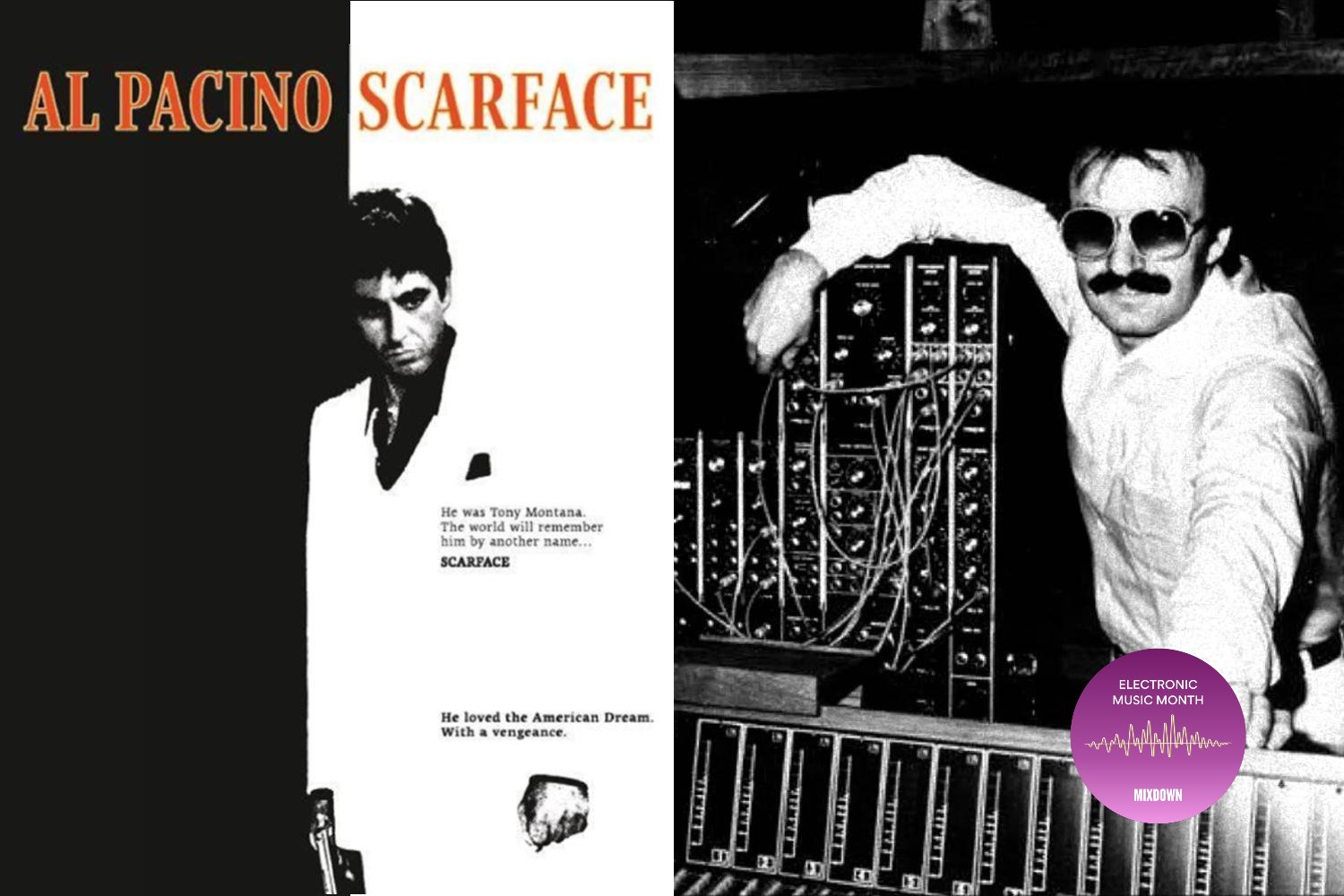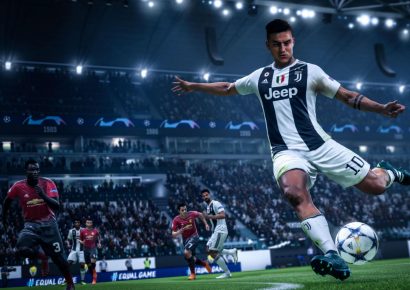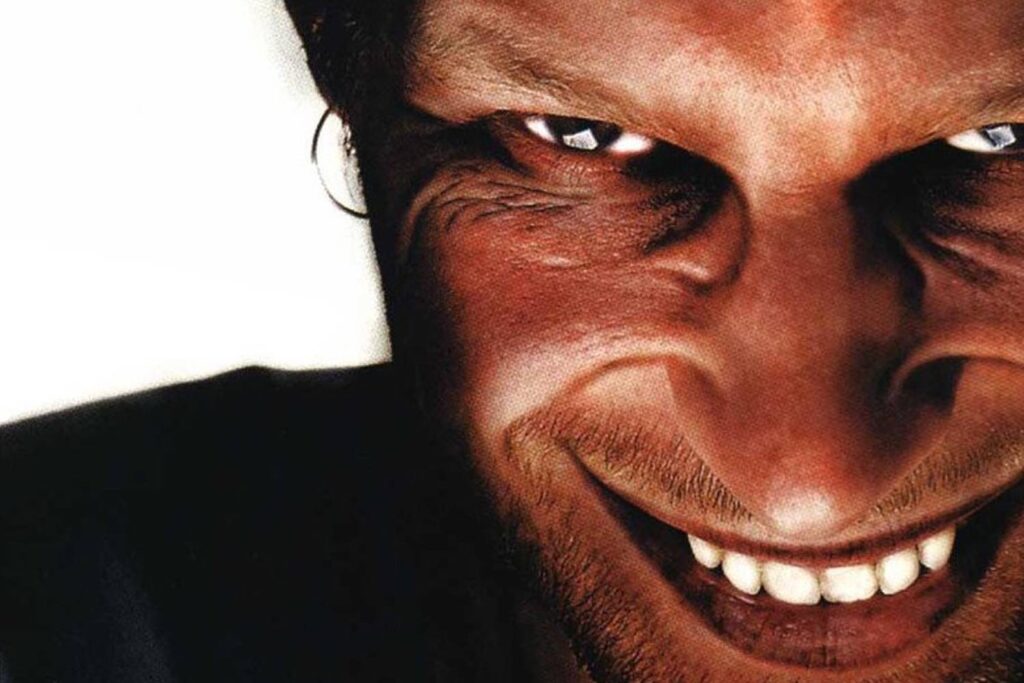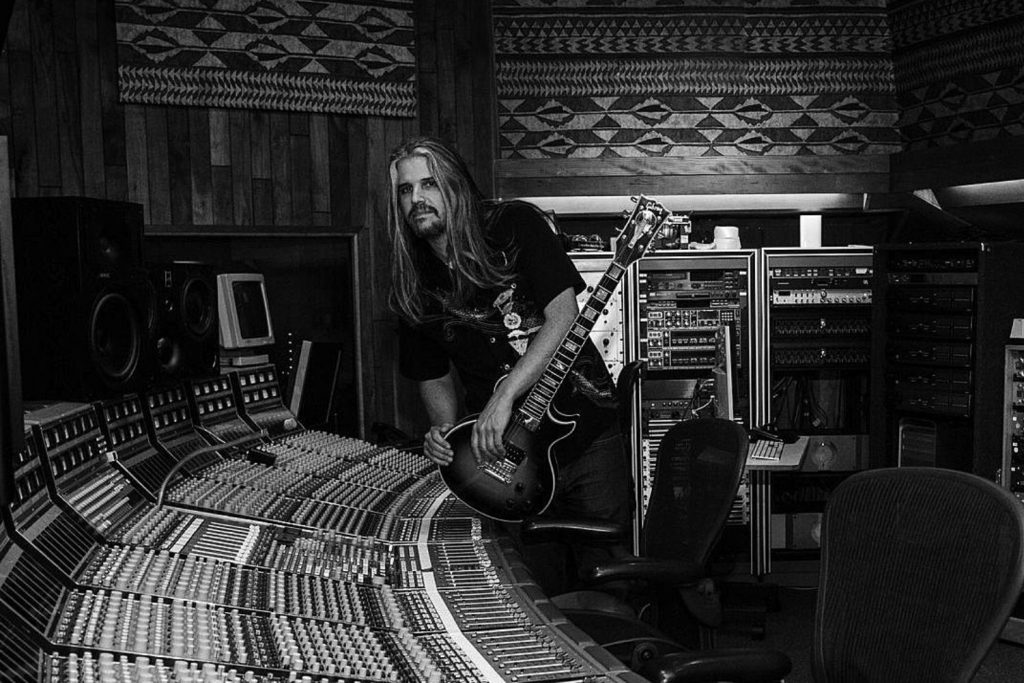An exposè of synths and gear used on Giorgio Moroder's magnum opus soundtrack.
Scarface is one of the best mobster/crime films of all time which follows the rise of a Cuban immigrant who wants to live a lavish life and will do anything to get there. Tony Montana (Al Pacino) starts out as a petty thug and makes his way through the ranks of local drug boss Frank Lopez, before taking over his business and becoming one of the biggest drug lords in Miami. The almost three hour epic has one of the best soundtracks going, and it is fitting that a film of this caliber had its soundtrack composed by none other than Giorgio Moroder.
Read up on all the latest interviews, features and columns here.
Moroder composed the whole film and collaborated with Arthur Barrow, Sylvester Levay and Kristian Schultze to arrange and program synthesisers to create this epic. The soundtrack also features appearances from vocalists Paul Engemann, Debbie Harry, Amy Holland and Elizabeth Daily. From the pretty and fun disco songs, to the incredibly moody, dark and sinister tracks that highlight parts of the film, Giorgio Moroder absolutely killed this soundtrack.
Today we’re going to have a look at some of the synths used by Moroder and his team of synth wizards on the Scarface Soundtrack to help unpack how it was made.
Roland Jupiter-8

The Roland Jupiter-8, a beast. This 8 voice polyphonic synth features two discrete VCOs per voice, modulation and two envelopes for controlling the filter and volume. There’s a high pass filter built in here too to remove some of the low end junk that might otherwise print to tape. A standout feature from the Jupiter-8 is polyphonic Unison, which spread all sixteen oscillators over one note. This allowed for an extremely wide sound that wasn’t available on many other synths at the time.
Perhaps the best display of this synth is the arpeggiated bass line on ‘Rush Rush’. The swung bouncy line displays some expert programming and great use of the filter envelope to make sure there’s enough room in the mix for other higher frequency content. Jupiter-8 also takes charge of the bass on the incredible montage track ‘Scarface (Push It To The Limit)’, which has inspired a stack of parodies.
Being one of the most used synths on this soundtrack, the Jupiter-8 also provided melodies on a few tracks—namely ‘Scarface (Push It To The Limit)’ and ‘She’s on Fire’
Yamaha CS-80
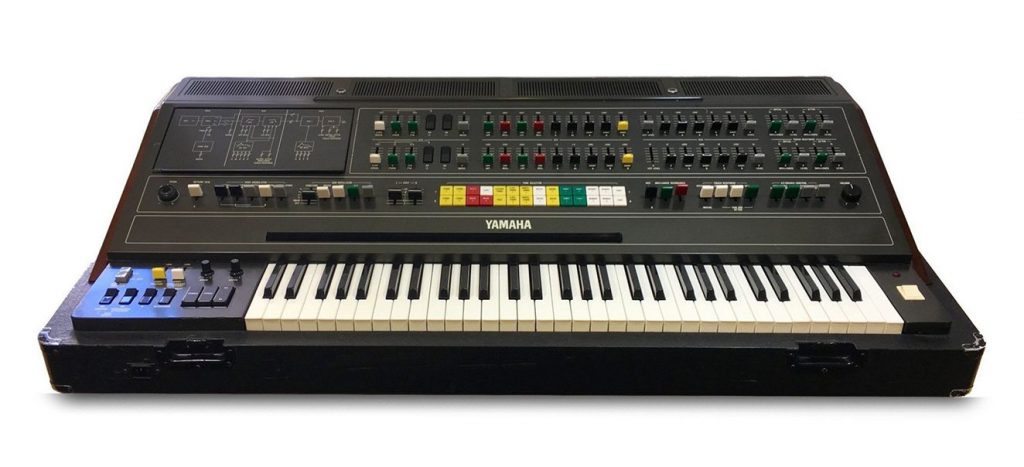
Released in 1977, the Yamaha CS-80 is an 8 voice polyphonic synthesiser with two oscillators available to use per voice. Its use was perhaps best captured on Vangelis’ Blade Runner soundtrack which no doubt inspired in some regard the synth tones on this soundtrack. Each channel has independent high and low pass filters, enabling great control over the final outcome.
This beast of a synth provided the huge pads on ‘Tony’s Theme’, which plays throughout pivotal moments in the movie including when he murders his boss, Frank Lopez and at the grand finale of the film, in which Tony gets killed and drowns in his fountain. This theme is played with imagery featuring ‘The World is Yours’ is shown on screen highlighting Tony’s main endeavour and eventual demise.
‘Tony’s Theme’ is menacing and bold, which one could only attribute to this iconic ’80s synthesiser. Giorgio Moroder worked with a few people in the making of this soundtrack and one of them was Kristian Schultze, who reportedly played this synth on the track.
‘Tony’s Theme’ was sampled by Kanye West and G.O.O.D. Music on the track ‘Mercy‘ which enhances the legacy of the gangster and bravado themes of the movie.
Serge Modular Synthesiser
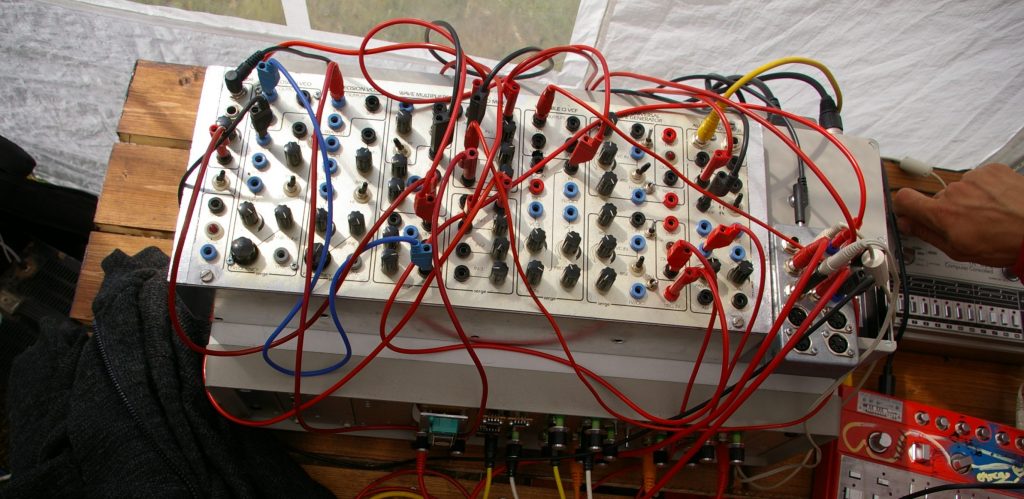
Serge modular synth systems are varied depending on their user due to the, well, modular nature of them, and could generate anything you’d like, considering you were willing to purchase all the modules. It’s unknown what the exact setup used on the Scarface Soundtrack but this definitely makes an appearance on ‘Rush Rush’ in the form of the spacey drum sounds and effects that appear on this track.
Moog minimoog
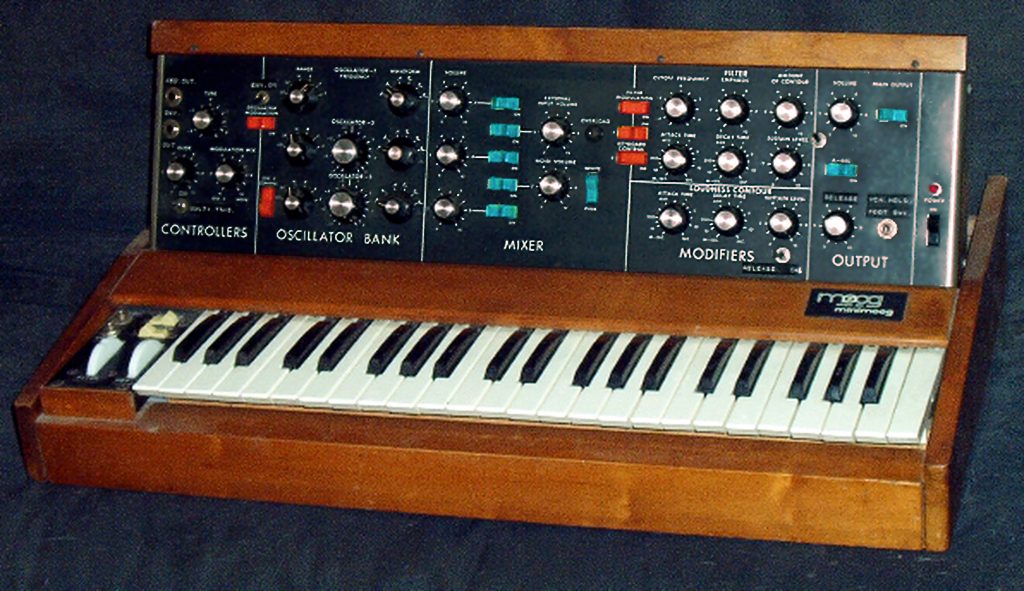
This penultimate synthesiser that changed the game appears here courtesy of Giorgio Moroder’s obsession with the device. This synth was the first all in one unit sold in retail stores and revolutionised how music was created. It’s a monophonic synth with three switchable oscillators. The minimoog featured both amplitude and filter envelopes which would become standard for most other synths moving forward.
Being a mono synth, the minimoog was used by Moroder on the bass line of ‘Tony’s Theme’ alongside samples from the Fairlight CMI II which we’re about to talk about.
Fairlight CMI II
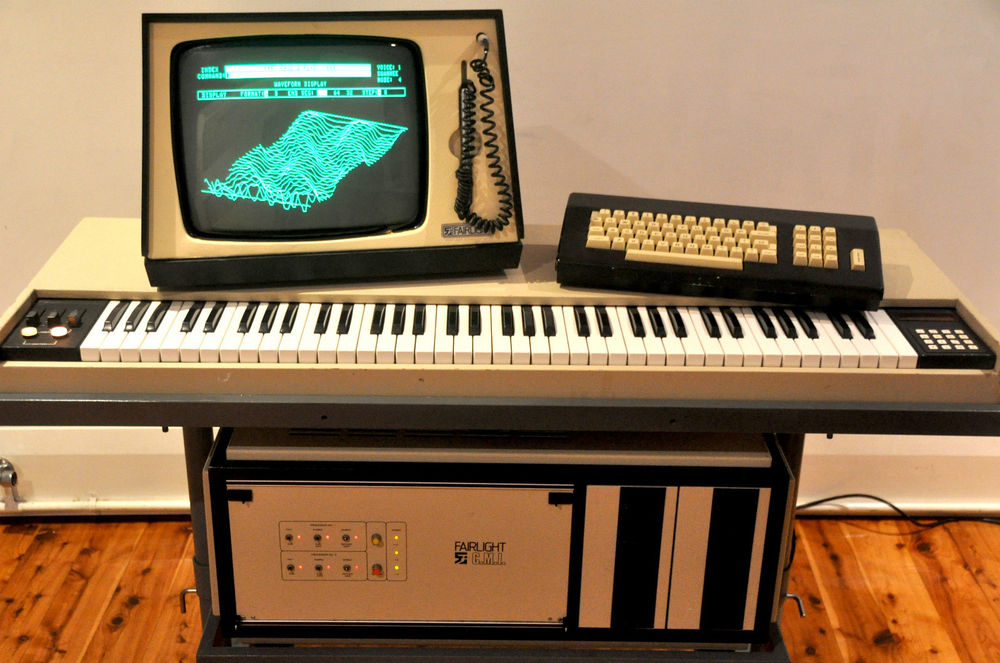
Created by two aussies in the ’70s, the Fairlight CMI was the first sampler to hit the market, and created a wide range of possibilities available to producers without having to splice tape or record the effects in real time. Definitely something we take for granted in today’s musical landscape, I mean look at the size of the thing!
A Fairlight CMI II was used on the Scarface soundtrack to create percussion, vocal effects and more across the entire movie. The best example of its use is the vocal ‘ah’s on ‘Tony’s Theme’ but it is heard throughout other tracks too.
Linndrum
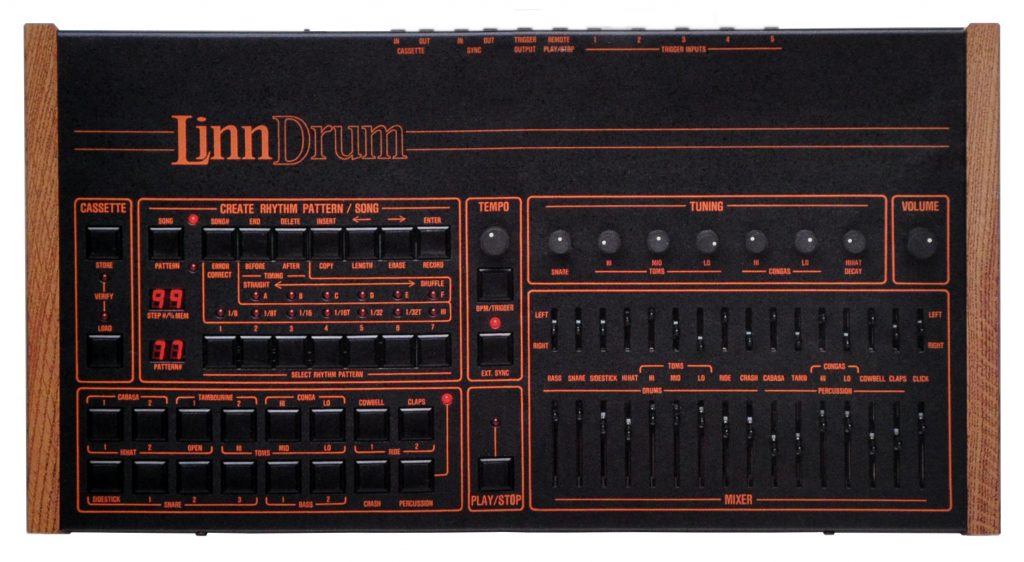
Roger Linn’s Linndrum is one of the most famous drum machines of all time, behind a few of the the Roland ones we need not name. The Linndrum was the first drum machine to feature actual samples from a real drummer, not synthesised ones. With volume faders for each drum, it’s relatively easy to get a great drum sound kicking straight out of the box.
The Linndrum was used over the whole soundtrack but is likely most evident in ‘Gina’s and Elvira’s Theme’ where it is front and centre playing a very standard 4/4 rock groove.
Studer Tape Machine
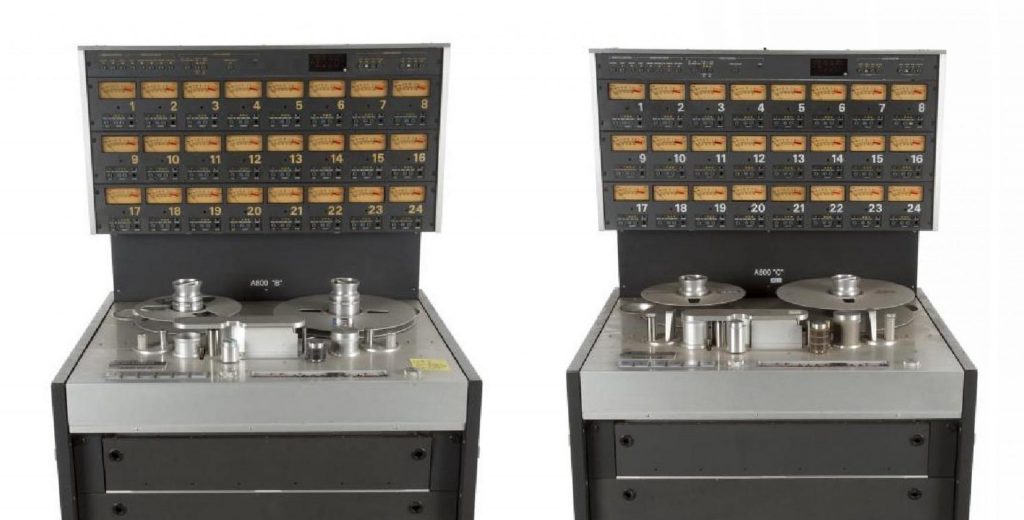
Maybe not the most interesting piece of gear on here but Giorgio Moroder utilised two 24-track Studer tape machines for the recording of this soundtrack.
With the incredible legacy Scarface has left behind, there’s no doubt it wouldn’t have been as succinct without Giorgio Moroder’s unique vision for the soundtrack.
For more, check out this interview with Giorgio Moroder on Scarface.
